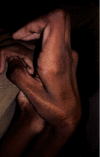Eye Manifestations of Shprintzen-Goldberg Craniosynostosis Syndrome: A Case Report and Systematic Review
- PMID: 33628537
- PMCID: PMC7895601
- DOI: 10.1155/2020/7353452
Eye Manifestations of Shprintzen-Goldberg Craniosynostosis Syndrome: A Case Report and Systematic Review
Erratum in
-
Corrigendum to "Eye Manifestations of Shprintzen-Goldberg Craniosynostosis Syndrome: A Case Report and Systematic Review".Case Rep Genet. 2020 Nov 11;2020:4708976. doi: 10.1155/2020/4708976. eCollection 2020. Case Rep Genet. 2020. PMID: 33301545 Free PMC article.
-
Corrigendum #2 to "Eye Manifestations of Shprintzen-Goldberg Craniosynostosis Syndrome: A Case Report and Systematic Review".Case Rep Genet. 2021 Aug 28;2021:9897523. doi: 10.1155/2021/9897523. eCollection 2021. Case Rep Genet. 2021. PMID: 34513099 Free PMC article.
Abstract
Shprintzen-Goldberg craniosynostosis syndrome (SGS) is a rare autosomal dominant condition that was first documented in literature in 1982. The disorder is caused by pathogenic variants in the proto-oncogene SKI gene, a known suppressor of TGF-β activity, located on chromosome 1p36. There is considerable phenotypic overlap with Marfan and Loeys-Dietz syndromes. Common clinical features of SGS include craniosynostosis, marfanoid habitus, hypotonia, dysmorphic facies, cardiovascular anomalies, and other skeletal and connective tissue abnormalities. Ocular manifestations may include hypertelorism, downslanting palpebral fissures, proptosis, myopia, and ectopia lentis. We describe a 25-year-old male with the syndrome. Genetic analysis revealed a novel c.350G>A (p.Arg117His) de novo variant, which was predicted to be pathogenic by the CTGT laboratory. The patient presented with dysmorphic features, marfanoid habitus, severe joint contractures, mitral valve insufficiency, aortic root dilatation, and a history of seizures. His ocular manifestations included hypertelorism, downslanting palpebral fissures, bilateral ptosis, and high myopia. Ophthalmic manifestations are an integral component of the syndrome; however, they have not been well characterized in the literature. From a systematic review of previously published cases to date, we summarize the eye and ocular adnexa manifestations reported.
Copyright © 2020 Jamie H. Choi et al.
Conflict of interest statement
Natario L. Couser, MD, MS, is a principal investigator at the Virginia Commonwealth University site (Retrophin, Inc.) and a book author of Elsevier. All other authors declare that they have no conflicts of interest.
Figures
References
Publication types
LinkOut - more resources
Full Text Sources



